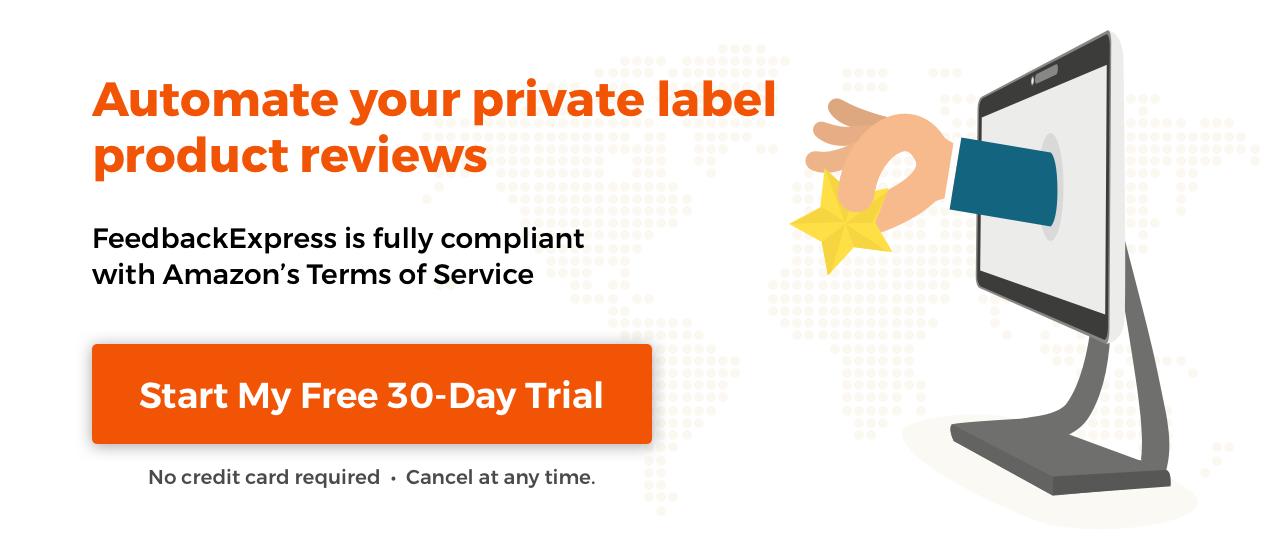When it comes to writing, there are two main challenges: come up with a good body, and coming up with a good title. FeedbackExpress has plenty of posts about how to optimize your Amazon listings so we’re going to focus in a different area and show you how to grab your reader’s attention with concise, informative and interesting product titles for Amazon.
The Crucial Pieces of Information Needed in a Product Title
Before you start anywhere, you’ll want a general formula to use as your guideline (Amazon also helps out with how to come up with formulas). No matter what product(s) you’re selling, the title should contain the following bits of information:
- Brand name
- Colour and/or flavour and/or variant
- Size and/or quantity
- Keywords
As an example, if you’re selling men’s sneakers, the product title should look something like this: Nike Black Size 14 Men’s Sneakers. This is a very distilled version of how it should look, and we’ll explore how to flesh it out (titles are allowed up to 200 characters) so it ranks higher in searches.
[fusion_builder_column spacing=”” center_content=”no” hover_type=”none” link=”” min_height=”” hide_on_mobile=”small-visibility,medium-visibility,large-visibility” class=”” id=”” background_color=”#F1F8FF” background_image=”” background_position=”left top” background_repeat=”no-repeat” border_size=”0″ border_color=”” border_style=”solid” border_position=”all” padding=”20px” animation_type=”” animation_direction=”left” animation_speed=”0.3″ animation_offset=”” type=”1_1″]
Amazon Product Title Update: June 2019
Amazon announced in mid-June that listing titles that don’t comply with their rules will now be near-impossible for customers to find on the platform. This has been on the cards for a while now, as Amazon’s algorithm moves towards favouring listings whose titles are relevant to the customers search terms, instead of being stuffed with keywords.
Put bluntly, if your ASIN titles aren’t fully optimised and up to scratch then your products won’t appear. In order to create a positive customer experience, your content needs to be good quality and complete.
[/fusion_builder_column]
Formatting Rules to Follow
Amazon has specific guidelines on how product titles should be written, and they include:
- Capitalising the first letter of every word (an exception to this is the word ‘and’, which should be in all lowercase letters) and don’t capitalise every single word.
- Writing it as ‘and’ and not using the ampersand (‘&’), unless the ampersand is part of the product’s brand name.
- Writing numbers as numerals, not words (e.g. 14 instead of fourteen).
- Units of measurements should be spelt out and not abbreviated (e.g. Pounds instead of lbs, etc.).
- Avoid putting prices, promotions, symbols, seller information and suggestive commentary in the title (e.g. don’t say a product or you are the best).
- You don’t need to put the colour or size in the title if it’s not directly relevant to the product (e.g. if an item only comes in one colour or size, like a stainless steel toaster).
Coming Up with the Best Keywords
This is often where merchants sell themselves short. Amazon has its own unique algorithm that you can tap into, which can help your product rank higher on searches. Although different factors, like price, availability, sales history and selection also impact a product’s search ranking, the keywords you use are often most within your control.
It’s easy to fall into the trap of favouring quantity over quality, especially if you’re unsure of which keywords will work best. But keyword stuffing (i.e. the practice of jamming as many keywords into the title as possibly allowed) can actually harm your product’s ranking. Instead, it’s well worth it to spend a bit of time finding out which keywords work best for you.
For this, we recommend putting yourself in the place of a buyer. Do searches for the products you’re selling, and see which items pop up first. Examine the keywords found in those titles and compare how frequently they’re found in your searches. Then, take the most common keywords and apply them to your product titles. As a bit of extra work that may pay handsome dividends, see if there are other, less frequently used keywords that are associated with sellers with a high ranking. The goal is to emulate these merchants so you can be a better seller yourself.
Boost your Amazon reviews
It’ll take a bit of time and practice, but eventually, you’ll get to the point where writing awesome product titles will come as easily and quickly as writing your own name. Once it does, and once you see a spike in your sales volume, make sure you’re using the best feedback software possible (it’s FeedbackExpress, in case you were wondering) to boost your positive reviews and help you stand out even more. As a bonus, when you sign up now, you start things off with the first 14 days totally free.



